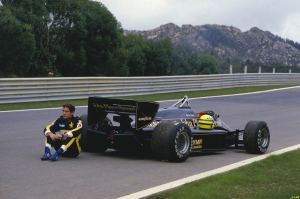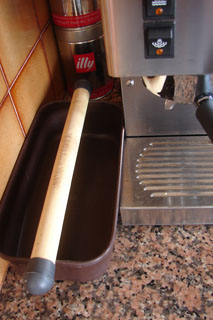M-am gândit, că acum, când se pregătesc bucatele pentru Crăciun nu ar fi rău să vă descriu o masă tradiţională, naţională, de Crăciun!
Aam spus întotdeauna că trebuie să revenim la obiceiurile şi morala clasei de mijloc, ale mic burgheziei dintre cele două războaie. Am găsit, într-un vechi “carnet de bal” lista pentru masa de Crăciun, anul 1937, listă făcută de bunicul meu dom’ Pascale, negustor şi meseriaş cinstit şi stimat din Obor şi de bunica mea Uţa, băcăniţă cu marfă bună şi ieftină dar şi proprietară a multor terenuri din jur, aflate pe foia de zestre – de pe Maşina de Pâine, numărul 52, lângă Fabrica de sifoane, la bariera Oborului. Pe la ora 13,30, în ziua de Crăciun, se strângeau musafirii: d’alde Malaxa, Asan şi Predoleanu, boierii Şerbănescu, Florescu şi Ştefănescu (celălat bunic al meu), generalul Petroff, avocatul Petrovicescu, ambasadorul X şi consului Y. Am completat câte puţin cu amintirile mele din copilărie, din anii ’50, când dom’ Pascale încă mai putea să-şi ţină eticheta. Întâi se servea domnilor care se aşezau la masa uriaşă de 24 de persoane, cu farfurii de porţelan de Bavaria cu două spade, albastre, încrucişate, şi tacîmuri de argint sterling, englezeşti, desigur – ei bine, se servea alune sărate şi ţuică de Văleni. Doamnele se învârteau pe la bucătării, “îşi pudrau nasul” iar copiii deschideau cadourile aflate sub Pomul de Crăciun. Poate o să râdeţi, dar eu, personal, am auzit de Moş Crăciun, de substitutul său, Moş Gerilă, abia la şcoală, în clasa I-a. La noi în familie cadourile de Crăciun erau aduse de Prunc, sau de Cei Trei Crai de la Răsărit! Apoi doamnele, vesele şi foarte bine dispuse, pentru că la bucătării, aveam trei bucătării, era şi puţină, sau mai multă, mastică de Chios – începeau să umple masa. Ouă umplute, cu o pastă al cărui secret s-a pierdut, dar cred că era pe bază de ficat de pasăre, unele poate şi cu anşoa, decorate cu frunzuliţe de pătrunjel sau murături, roşii umplute cu brânză de vaci de la olteni, mezeluri, neapărat salam de Sibiu, ghiudem, babic, kaizer, trei-patru feluri de brânzeturi, caşcavaluri, Camembert. Totul aşezat pe platori mari de alpaca argintată! Măsline naturale marinate, nu din cele negre. Cât am fost copil nu am văzut măsline negre! Se aduceau sticlele de ţuică, neapărat de Văleni şi Piteşti. Apoi venea marea salată de beuf, făcută din maioneză pregătită în casă cu ouă de la Săruleşti şi cu un ulei special adus din Albania, nu, nu ulei de măsline, altceva, dar nu se mai ştie calitatea în ziua de astăzi! Cu o cruce mare, roşie, din murături roşii, gogoşari, peste maioneză strălucitoare. Nu ştiu exact semnificaţia, de fapt o ştiu foarte bine, dar asta este altă poveste… Pâine albă şi neagră, de pe Lizeanu. Erau la rând, tremurând de nerăbdare, piftia de porc şi de curcan cu murături şi felii de ou în aspic. Apoi se făcea o mică pauză, domnii vorbeau de afaceri, politică şi curse de cai, iar doamnele despre modă, copii şi actori.
Iarăşi doamnele se ridicau de la masă, evacuau farfuriile şi platourile folosite, ca să apară cu alte bunătăţi: icre şi pescărie. Sigur, aveam bucătari şi servitoare, dar la Crăciun şi Paşte tradiţia de două sute de ani a familiei cerea ca doamnele să servească la masa festivă, ca demonstraţie balcanică a dragostei şi a respectului faţă de bărbaţi, capii familiei, cei care aduceau banii în casă! Icre de Manciuria şi Beluga şi autohtonele icre de ştiucă. Cu lămâi frumos tăiate, în spirale şi la icrele negre se mai adăuga unt de Sinaia şi gălbenuş tare de ou. Pâine prăjită, de la cuptorul de pe Zece Mese. Apoi urmau şalău cu maioneză în sos alb de lămâie şi somn la grătar. Se servea un vin alb sec, Fetească. Se mai făcea o pauză, bărbaţii jucau table sau stos, iar doamnele îşi scoteau pantofii cu platformă, înalţi şi periculoşi, ca să încalţe papuci de blană, de la Braşov. La un moment dat gazda întreba: “Măi băieţi, dar vouă nu vă este foame?” Semn pentru aducerea celor trei sute treizeci şi trei de sarmale. Cu mămăliguţă făcută cu lapte din mălai de moară de piatră şi smântână tot de la olteni. La sarmale mai apăreau pe masă şi două-trei feluri de muştar, hrean şi alte mirodenii de dres gustul, după poftă. Cine voia putea lua, înaintea sarmalelor, o ciorbică de perişoare sau o supă de pui! Apoi fără întrerupere, apăreau fripturile de porc, curcan şi vânat, cartofii prăjiţi pai, franţuzeşte, murăturile de multe feluri, gogonele, castraveţi, gogoşari. Apoi mici bucăţele de cârnat, ficat, rinichi, şorici, lebăr, caltaboş, mititei, pomana porcului! Două feluri de vin roşu, sec, Băbească şi Pietroasele. Sigur, toate băuturile se serveau în pahare de cristal, cristal adevărat, “cu ochi” nu imitaţiile patetice de astăzi cu 24% plumb! Pentru copii se făcea un meniu separat, cu piure şi şniţel vienez! Cine voia, comanda o cafea, făcută neapărat din cafea braziliană de la “Armeanul”. Doamnele preferau o ciocolată caldă cu frişcă atunci bătută! Se mai sta şi se mai discuta preţ de la vreo oră, se puneau la cale logodne şi încuscriri, călătorii şi vacanţe. Undeva, în salonul mic, se auzea un patefon iar domnii invitau doamnele la dans! Apoi începeau să fie aduse fructele şi dulciurile, toate odată, ca să aleagă omul şi să se sature numai văzându-le! Portocale, mandarine, banane, ananaşi, mere, pere şi un… pepene!
Urmau cozonacii, imenşi, parfumaţi, plini de nucă, stafide şi de cacao. Rahat nu se punea pe atunci! Vinul se schimba cu dulcele Cotnari! Fursecuri de multe feluri şi mărimi, prăjituri făcute numai în casă, cu gust fantastic, cum nu se mai fac, două torturi, mereu două. Aşa era tradiţia la noi în casă. Un tort pentru Prunc şi unul pentru Mama Lui, Fecioara Maria! Apoi urma dansul, “konga” în toată casa, cadourile trăznite pe care şi le făceu unul altuia mesenii, jocuri de societate, glume, bancuri, păcăleli, “mima” etc. Oamenii chiar se distrau cât puteau şi râdeau în hohote! De Crăciun nu se bea şampanie… doar de Revelion! Pe la ora zece noaptea se aducea o a doua cafea, semn că musafirii trebuie să se cam ducă pe la casele lor.
A doua zi, prin curier, dom’ Pascale şi coniţa Uţa primeau carţile de vizită ale mesenilor cu câte o scrisoare de mulţumire în care se arăta cât de bine s-au simţit…
Dacă v-aţi simţit bine la acestă invitaţie la petrecere prin spaţiu, timp şi gând, pentru că, nu-i aşa, nu este mare diferenţă între spaţiu, timp şi gând, ei bine, vă invit şi mâine, vă trimit cartea mea de vizită, pentru că mâine, este în definitiv, o altă zi!
[Text luat de undeva, primit prin chain email. Tot respectul autorului!]








